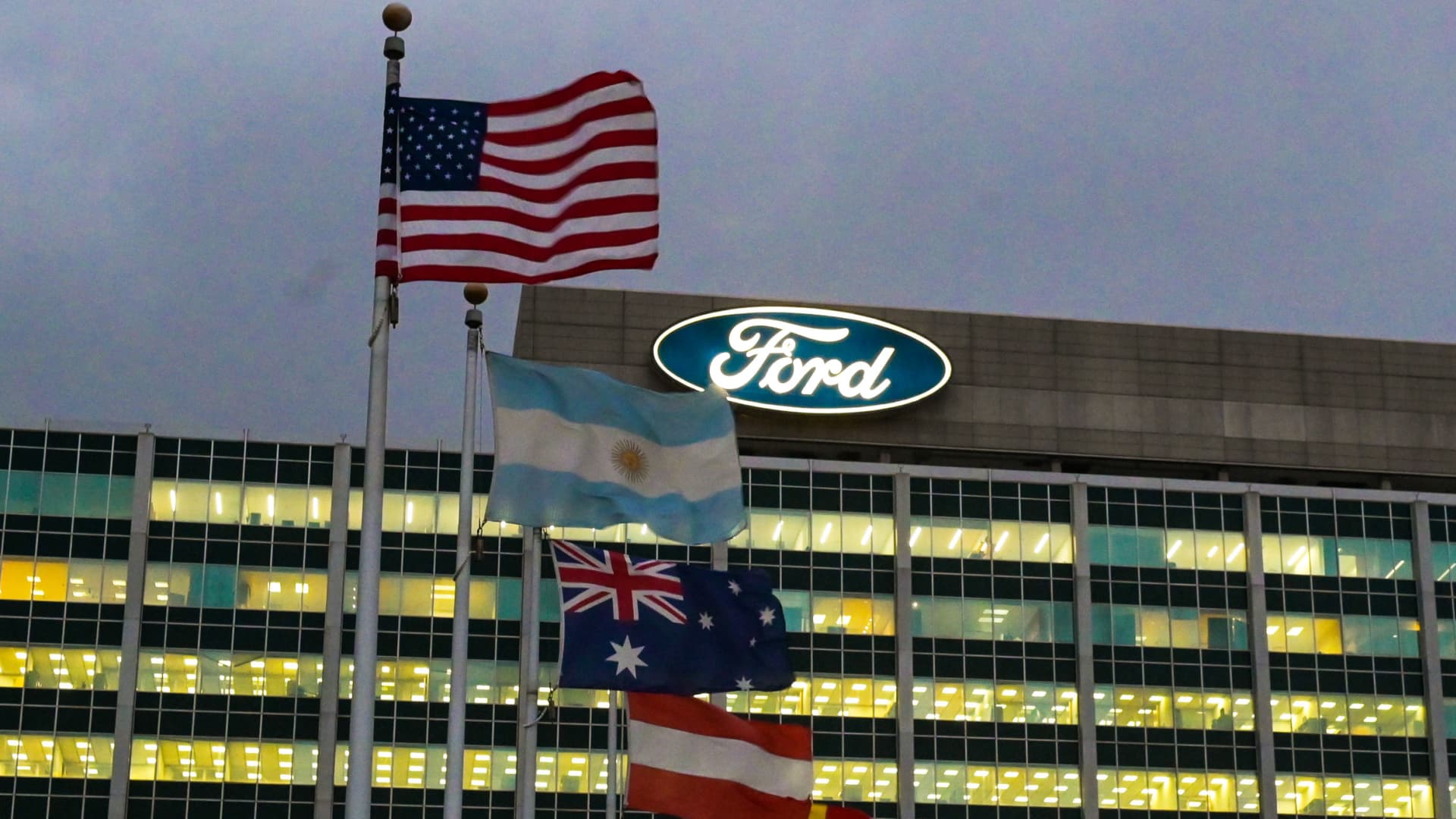After several setbacks and delays due to the Covid-19 pandemic, Ford Motor Co. finally started to welcome its salaried workforce back to its offices earlier this month.
It also came alongside a significant shift in workplace policy from the company that helped establish the traditional five-day, 40-hour workweek as the norm: the start of its new hybrid work model where non-site-dependent employees could work flexibly between a Ford campus location and remote.
Ford perhaps had reason to believe many of its employees would look to return to the office once the plan rolled out. The company polled 56,000 global employees who were working remotely in June 2020 about their work preferences post-pandemic and 95% said they wanted a mix of remote and in-office work, while 5% said they wanted to be onsite.
Still, Ford Chief People and Employee Experience Officer Kiersten Robinson said during a CNBC Work virtual event on Wednesday that the early results “have been a little surprising.”
“When we opened our doors on April 4 to our employees to welcome them back into the workplace – those that wanted to come in – the numbers that actually have come back into work have been lower than we expected,” Robinson said.
While the company is “very early in the experience,” according to Robinson, Ford is still seeing signs among those that have come into work that they’re able to “do highly collaborative team-based brainstorming and strategic work together.”
Here are some of the key things Ford has observed since welcoming back workers.
Focus on auto manufacturing jobs
Given that Ford has many employees that have jobs that don’t allow for remote or hybrid work, Robinson said that the company has been “really clear that the nature of work informs where and how work gets done.”
“Our manufacturing plants, you can only do that work in the facility and so our focus in those locations is to make sure that the work environment is as conducive and inviting as possible, and what are some of the additional tools and amenities that we can provide,” she said.
That has led Ford to undergo an effort to examine how it can improve manufacturing facilities, looking at ways to improve worker wellbeing, nutrition, and even natural light in the space – “conditions that can really impact your work experience,” Robinson said.
For knowledge workers, Ford is asking departments to meet with their teams and create a plan around what they need to do in a 90-day period, asking questions about the key work tasks, and how and where would be the best ways to do that work.
“We’re measuring sentiment, we’re measuring the employee experience over those 90 days, but of course, we’ll be able to measure the output and whether or not employees feel as though with that agency and with that choice, they’re as productive as they need to be,” Robinson said.
Collecting data on new office habits
Robinson said that Ford has already revamped 33% of its facilities in southeast Michigan to “make them more conducive for collaborative hybrid work,” and that it has a roadmap to continue to do that in the coming years.
Ford is assuming that roughly 50% of its employees will be in the office on any given day, but Robinson said it will test that hypothesis more clearly over the coming months.
Ford confirmed a small workforce reduction on Wednesday when it reported earnings, a net loss of $3.1 billion in the first quarter, largely due the loss in value of a 12% stake in EV start-up Rivian Automotive. As it pivots to EVs, 580 U.S. salaried employees and agency workers, largely in engineering, were let go as part of the Ford+ turnaround plan.
The company has no plans to reduce the number of facilities it has, but rather make the spaces as conducive as possible for hybrid work, she said.
With workers now back in the office, Ford is keeping a closer eye on how the spaces are actually being used.
“We’ve got very clear data around traffic patterns, the days that are the most popular and we’re using sensors in many of our facilities to even measure what types of spaces are being used and for what purpose,” Robinson said.
“There is no perfect answer here, other than I don’t think we can go back to how we worked pre-pandemic,” she said. “I really hope that we all embrace this as an opportunity to really rethink and reimagine the evolution of work and to experiment and really invest in understanding employee feedback, employees’ sentiment and to use that to continue to refine and reshape what work looks like.”

